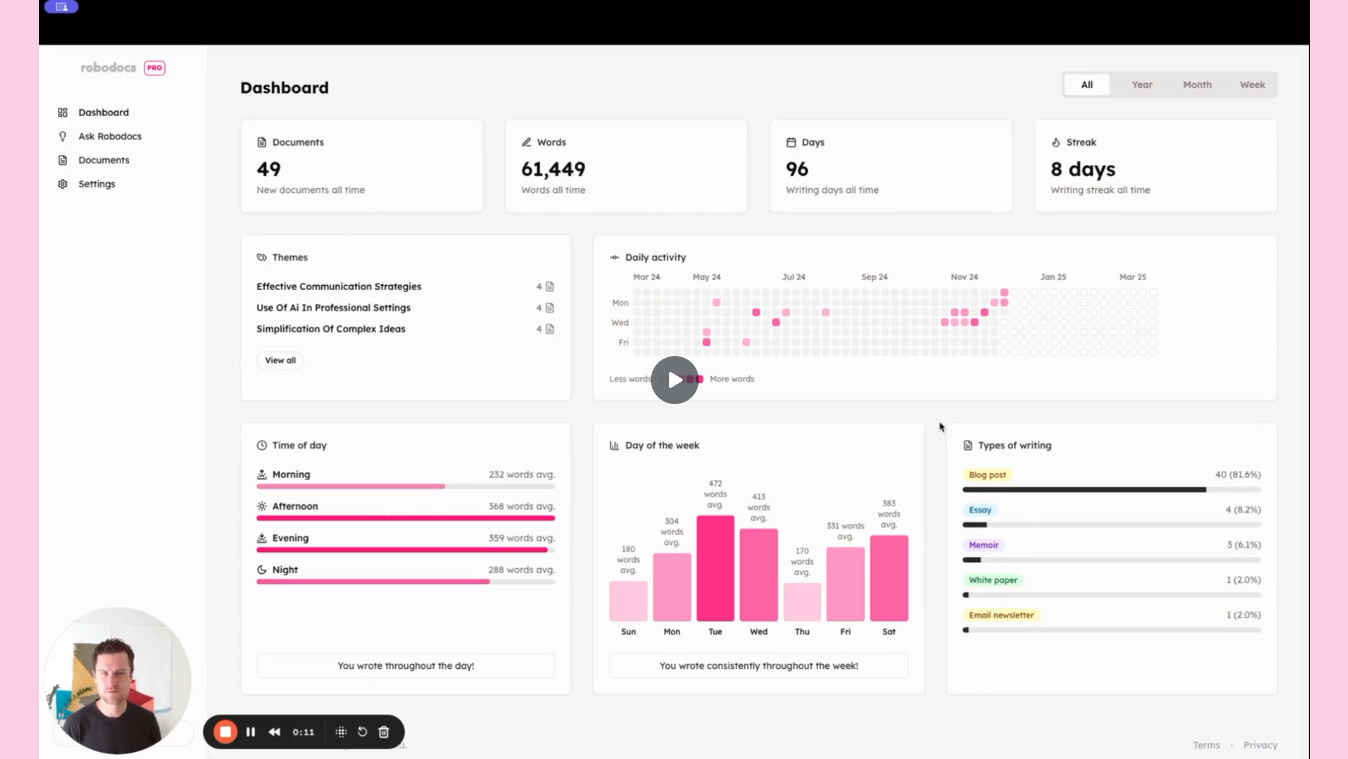AI FOMO is real — everyone is asking themselves “should I build an AI product?” But for most organizations that’s the wrong frame. They should be looking for AI interfaces on existing products instead.
AI products typically need to solve two fundamental challenges:
Aggregating and structuring a useful dataset
Building the AI workflow/interface on top of the data
Not only is the data pipeline often the more complex part, it’s also why a lot of ill-conceived AI products have a severe cold start — the AI isn’t useful until the data exists.
To show how simple it can be when you take the right approach, we built something. Last week I wrote about how companies will increasingly use software as content, so we decided to showcase exactly what we mean by building a valuable AI interface in less than a week.
Introducing Robodocs
Today we’re launching Robodocs — an AI assistant that turns your Google Drive into a Github profile, giving writers the same insights developers have about their work. And it took Rapha a week to build, part time. Want to see it in action? Watch the demo and test it out for yourself here:
Robodocs already does a lot. It ingests your Google Drive database, encrypts and analyzes all of the documents and your activity, and helps you stay accountable and gain actionable insights on your writing. There’s even an AI assistant that you can chat with who has access to everything you’ve written. Plus it’s fully hooked up to Stripe for paid subscriptions.
Our aim wasn’t just to show what we can build with AI in a few days, it was to hammer home the idea that the hard part about most AI products isn’t the AI, it’s the data.
Products like Robodocs are really simple to build, and for most companies they are a much better place to start vs something entirely new.
Opportunities for AI interfaces
If you’re looking for more inspiration, here are two types of AI interfaces we’re seeing:
SMS/email agents for seamless data entry
Think about the channels people already use constantly — SMS, email, Telegram. What if these became the natural interface for updating a key product or workflow? AI makes this possible by handling messy, conversational data and translating it into structured updates.
Here’s a real example: We're working with a company that's transforming how field sales reps update Salesforce. Instead of pulling up forms while driving between meetings, reps simply leave a quick voice note about their customer interaction. An AI agent follows up with any crucial questions, then automatically updates Salesforce. For sales people on the go, it's a game changer for their ability to keep data up to date.
Assistants built for a specific niche on top of general productivity tools
Many failed startups have tried to build “Google Docs for writers” or “Notion for {insert niche}.” The reason they fail is because getting to and keeping up with table stakes functionality is too hard.
Whether as a wedge for a new startup, or simply as an app to automate some specific process, these products are also shockingly simple to build (see Robodocs). A lot of the data plumbing has already been built by the underlying product, and building on top of existing data means your AI product has clear utility from day one.
Picking fruit in a platform shift
AI is a platform shift, akin to the shift to mobile. That opens the possibility for entirely new products, but it also means that virtually every existing product will get an AI interface. And if you want to go looking for low hanging fruit to build, that’s where you should start.
If you’re unsure about whether you have a good opportunity to build an AI interface, just send me a quick note about the data you have and the problem you’re hoping to solve and I can give you a very rough assessment of how expensive/time consuming it would be to build.


